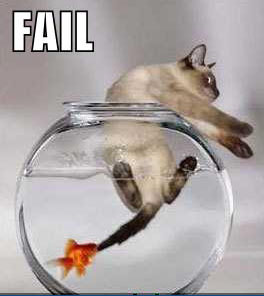I’ve been doing some joint work with someone whose experience is not from the sales side. We were debriefing on some opportunities and he responded, “I really enjoyed the buy side far more than the sell side.”
Sales is a unique discipline. Fraught with uncertainty, ambiguity, fear and moments of elation, sales can bring the most confident and capable of people to their knees. When it’s working (you’re winning) there’s nothing more fun; when you’re not there are few things more stressful.
While this has always been true in sales, recent trends amplify the challenge of succeeding. The Zero-Moment-of-Truth study has forever changed the way that buyer’s buy. The redesigned corporate structure post-Great Recession has fundamentally changed the power structure, and buyers now control the entire process.
So, what’s the solution? I can tell you what it’s not…doubling down on sales training! How can you train to deal with ambiguity, complexity and uncertainty? How do you train business acumen? You can’t!
The Fundamental Problem With Sales Training
Sales training is the antithesis of real life sales. It teaches certainty. It propels the “illusion of control.” It illustrates right techniques and wrong ones.
In real-life selling there are no rights and wrongs. There are just degrees and situations and educated guesses. Recently I was coaching a rep for one of my clients and as he was explaining an opportunity to me, he asked, “What should I do here to win the sale?”
I told him that I couldn’t answer the question. I explained that I could tell him what typically works. I could share the advantages and disadvantages of various actions and approaches, but I couldn’t tell him what to do. When looking at sales on an opportunity-by-opportunity basis, every interaction is an outlier, and there is little that is predictable.
Needless to say, the rep didn’t like my answer. I responded to him, that if he brought me 10 opportunities I could help him win 6 – 7 of them, but I couldn’t guarantee him anything in a specific situation.
If Sales Training Isn’t The Answer, What Is?
Let me be clear, I am not saying that there is no role for training in sales. Training is a great way to introduce new ideas/concepts, and reinforce learning. Training should be a part of a greater ecosystem that is aligned with and supports a company’s overall demand and revenue generation approach.
While I realize that the last paragraph sounds very business-speaky, it’s a realization that scalable companies learned (and applied) a long time ago. For some reason, small and mid-sized B2B companies (SMEs) seem to feel that it either doesn’t apply to them, or is simply something they can’t do.
Neither is true. Here are the three realizations to accept to solve your sales training problem.
First, accept that selling exists in a system. When you’re getting unpredictable, disruptive and inconsistent results regularly the problem is in the system, not the behavior. Build a revenue generating system and many of the mysteries that have frustrated you will disappear.
Next, accept that you don’t control anything. Speak probabilistically rather than deterministically. Realize that your sales approach needs a certain volume or velocity to work. This is one of the main reasons that you must – must – spend more time and energy on multiplying your lead generation efforts and results. If you’re not generating enough of the right leads, you can't make your system work.
Finally, stop focusing on sales training (sales enablement) and instead focus on buyer enablement. Stop asking, “What can we do to sell more, better and faster?” Replace that with, “How can we educate our buyers and enable them to buy more, better and faster?”
Looking at the world through your buyer’s eyes will give you the traction you desire.

 Doug Davidoff
Doug Davidoff